QVXFFF &&d(acid)
Modify Date: 2024-01-02 18:21:45
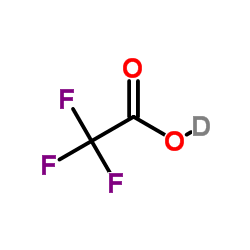
QVXFFF &&d(acid) structure
|
Common Name | QVXFFF &&d(acid) | ||
|---|---|---|---|---|
| CAS Number | 599-00-8 | Molecular Weight | 115.030 | |
| Density | 1.6±0.1 g/cm3 | Boiling Point | 72.2±35.0 °C at 760 mmHg | |
| Molecular Formula | C2DF3O2 | Melting Point | -15ºC | |
| MSDS | Chinese USA | Flash Point | -2.5±25.9 °C | |
| Symbol |


GHS05, GHS07 |
Signal Word | Danger | |
| Name | Trifluoroacetic acid-d |
|---|---|
| Synonym | More Synonyms |
| Density | 1.6±0.1 g/cm3 |
|---|---|
| Boiling Point | 72.2±35.0 °C at 760 mmHg |
| Melting Point | -15ºC |
| Molecular Formula | C2DF3O2 |
| Molecular Weight | 115.030 |
| Flash Point | -2.5±25.9 °C |
| Exact Mass | 114.999138 |
| PSA | 37.30000 |
| LogP | 1.24 |
| Vapour Pressure | 96.2±0.2 mmHg at 25°C |
| Index of Refraction | 1.294 |
Synonym:TFA- Section 2 - COMPOSITION, INFORMATION ON INGREDIENTS
Risk Phrases: 35 20 Section 3 - HAZARDS IDENTIFICATION EMERGENCY OVERVIEW
Causes severe burns. Harmful by inhalation.Corrosive. Potential Health Effects Eye: Causes eye burns. May cause chemical conjunctivitis and corneal damage. Skin: Causes skin burns. May be absorbed through the skin. May cause skin rash (in milder cases), and cold and clammy skin with cyanosis or pale color. Ingestion: May cause severe and permanent damage to the digestive tract. Causes gastrointestinal tract burns. May cause perforation of the digestive tract. The toxicological properties of this substance have not been fully investigated. Ingestion of large amounts of fluoride may cause salivation, nausea, vomiting, abdominal pain, fever, labored breathing. Exposure to fluoride compounds can result in systemic toxic effects on the heart, liver, and kidneys. It may also deplete calcium levels in the body leading to hypocalcemia and death. Fluoride can reduce calcium levels leading to fatal hypocalcemia. May cause systemic effects. Inhalation: Causes chemical burns to the respiratory tract. The toxicological properties of this substance have not been fully investigated. Aspiration may lead to pulmonary edema. May cause systemic effects. Chronic: Chronic inhalation and ingestion may cause chronic fluoride poisoning (fluorosis) characterized by weight loss, weakness, anemia, brittle bones, and stiff joints. Effects may be delayed. Chronic exposure to fluoride compounds may cause systemic toxicity. Section 4 - FIRST AID MEASURES Eyes: Get medical aid immediately. Do NOT allow victim to rub eyes or keep eyes closed. Extensive irrigation with water is required (at least 30 minutes). Skin: Get medical aid immediately. Immediately flush skin with plenty of water for at least 15 minutes while removing contaminated clothing and shoes. Wash clothing before reuse. Destroy contaminated shoes. Ingestion: Do not induce vomiting. If victim is conscious and alert, give 2-4 cupfuls of milk or water. Never give anything by mouth to an unconscious person. Get medical aid immediately. Inhalation: Get medical aid immediately. Remove from exposure and move to fresh air immediately. If not breathing, give artificial respiration. If breathing is difficult, give oxygen. Do NOT use mouth-to-mouth resuscitation. If breathing has ceased apply artificial respiration using oxygen and a suitable mechanical device such as a bag and a mask. Notes to Physician: Section 5 - FIRE FIGHTING MEASURES General Information: As in any fire, wear a self-contained breathing apparatus in pressure-demand, MSHA/NIOSH (approved or equivalent), and full protective gear. Can burn in a fire, releasing toxic vapors. During a fire, irritating and highly toxic gases may be generated by thermal decomposition or combustion. Use water spray to keep fire-exposed containers cool. Containers may explode in the heat of a fire. Vapors may be heavier than air. They can spread along the ground and collect in low or confined areas. Extinguishing Media: Use agent most appropriate to extinguish fire. Do NOT get water inside containers. Cool containers with flooding quantities of water until well after fire is out. Use water spray, dry chemical, carbon dioxide, or appropriate foam. Section 6 - ACCIDENTAL RELEASE MEASURES General Information: Use proper personal protective equipment as indicated in Section 8. Spills/Leaks: Avoid runoff into storm sewers and ditches which lead to waterways. Clean up spills immediately, observing precautions in the Protective Equipment section. Absorb spill using an absorbent, non-combustible material such as earth, sand, or vermiculite. Do not use combustible materials such as sawdust. Provide ventilation. Do not get water inside containers. Section 7 - HANDLING and STORAGE Handling: Wash thoroughly after handling. Use with adequate ventilation. Do not breathe dust, vapor, mist, or gas. Do not get in eyes, on skin, or on clothing. Keep container tightly closed. Avoid ingestion and inhalation. Discard contaminated shoes. Storage: Keep container closed when not in use. Store in a tightly closed container. Store in a cool, dry, well-ventilated area away from incompatible substances. Corrosives area. Section 8 - EXPOSURE CONTROLS, PERSONAL PROTECTION Engineering Controls: Facilities storing or utilizing this material should be equipped with an eyewash facility and a safety shower. Use process enclosure, local exhaust ventilation, or other engineering controls to control airborne levels. Exposure Limits CAS# 599-00-8: Personal Protective Equipment Eyes: Wear appropriate protective eyeglasses or chemical safety goggles as described by OSHA's eye and face protection regulations in 29 CFR 1910.133 or European Standard EN166. Skin: Wear appropriate protective gloves to prevent skin exposure. Clothing: Wear appropriate protective clothing to prevent skin exposure. Respirators: A respiratory protection program that meets OSHA's 29 CFR 1910.134 and ANSI Z88.2 requirements or European Standard EN 149 must be followed whenever workplace conditions warrant respirator use. Section 9 - PHYSICAL AND CHEMICAL PROPERTIES Physical State: Liquid Color: clear colorless to faint yellow Odor: acetic odor pH: acidic Vapor Pressure: 4.0 mm Hg @ 0C Viscosity: Not available. Boiling Point: 75 deg C Freezing/Melting Point: -15 deg C Autoignition Temperature: Not available. Flash Point: Not available. Explosion Limits, lower: Not available. Explosion Limits, upper: Not available. Decomposition Temperature: Solubility in water: Moderately Soluble. Specific Gravity/Density: 1.493 Molecular Formula: C2DF3O2 Molecular Weight: 115.008 Section 10 - STABILITY AND REACTIVITY Chemical Stability: Stable at room temperature in closed containers under normal storage and handling conditions. Conditions to Avoid: Incompatible materials, ignition sources, acids, strong oxidants, bases. Incompatibilities with Other Materials: Oxidizing agents. Hazardous Decomposition Products: Carbon monoxide, irritating and toxic fumes and gases, carbon dioxide, fluoride fumes, hydrogen fluoride gas. Hazardous Polymerization: Has not been reported Section 11 - TOXICOLOGICAL INFORMATION RTECS#: CAS# 599-00-8 unlisted. LD50/LC50: Not available. Carcinogenicity: Trifluoroacetic Acid-D - Not listed by ACGIH, IARC, or NTP. Section 12 - ECOLOGICAL INFORMATION Section 13 - DISPOSAL CONSIDERATIONS Dispose of in a manner consistent with federal, state, and local regulations. Section 14 - TRANSPORT INFORMATION IATA No information available. IMO No information available. RID/ADR No information available. Section 15 - REGULATORY INFORMATION European/International Regulations European Labeling in Accordance with EC Directives Hazard Symbols: C Risk Phrases: R 20 Harmful by inhalation. R 35 Causes severe burns. Safety Phrases: S 28A After contact with skin, wash immediately with plenty of water. S 37 Wear suitable gloves. S 45 In case of accident or if you feel unwell, seek medical advice immediately (show the label where possible). WGK (Water Danger/Protection) CAS# 599-00-8: No information available. Canada CAS# 599-00-8 is listed on Canada's NDSL List. CAS# 599-00-8 is not listed on Canada's Ingredient Disclosure List. US FEDERAL TSCA CAS# 599-00-8 is listed on the TSCA inventory. SECTION 16 - ADDITIONAL INFORMATION N/A |
| Symbol |


GHS05, GHS07 |
|---|---|
| Signal Word | Danger |
| Hazard Statements | H314-H332 |
| Precautionary Statements | P280-P305 + P351 + P338-P310 |
| Personal Protective Equipment | Faceshields;full-face respirator (US);Gloves;Goggles;multi-purpose combination respirator cartridge (US);type ABEK (EN14387) respirator filter |
| Hazard Codes | C:Corrosive; |
| Risk Phrases | R20;R35;R52/53 |
| Safety Phrases | S26-S27-S28-S45-S61-S9 |
| RIDADR | UN 2699 8/PG 1 |
| WGK Germany | 3 |
| Packaging Group | I |
| Hazard Class | 8.0 |
|
~99% 
QVXFFF &&d(acid) CAS#:599-00-8 |
| Literature: Dannenberg, J.J.; Goldberg, B.J.; Barton, J.K.; Dill, K.; Weinwurzel, D.H.; Longas, M.O. Journal of the American Chemical Society, 1981 , vol. 103, # 26 p. 7764 - 7768 |
|
~% 
QVXFFF &&d(acid) CAS#:599-00-8 |
| Literature: Chemistry of Heterocyclic Compounds (New York, NY, United States), , vol. 21, # 4 p. 438 - 442 Khimiya Geterotsiklicheskikh Soedinenii, , vol. 21, # 4 p. 525 - 529 |
| Precursor 2 | |
|---|---|
| DownStream 10 | |
|
Conformations of cyclic peptides. IV. Nuclear magnetic resonance studies of cyclo-pentaglycyl-L-leucyl and cyclo-diglycyl-L-histidyldiglycyl-L-tyrosyl.
Biochemistry 8(10) , 4087-95, (1969)
|
|
|
Anti stereochemistry in protodesilylation of an optically active allylsilane with trifluoroacetic acid-D. Hayashi T, et al.
Tetrahedron Lett. 23(44) , 4605-6, (1982)
|
|
|
The Vapor Phase Dissociation of Some Carboxylic Acids. III. 1 Trifluoroacetic Acid and Trifluoroacetic Acid-d2, 3. Taylor MD and Templeman MB.
J. Am. Chem. Soc. 78(13) , 2950-53, (1956)
|
| Trifluoroacetic acid-D |
| Trifluoro(H)acetic acid |
| MFCD00044563 |
| Deuterotrifluoroacetic acid |
| Trifluoro(2H)acetic acid |
| Trifluoroaceticaciddeuterated(TFA-D) |
| 2,2,2-Trifluoroacetic acid-d |
| QVXFFF &&d(acid) |
| Acetic acid-d, 2,2,2-trifluoro- |
| Trifluoroacetic (2H)acid |
| EINECS 209-961-2 |
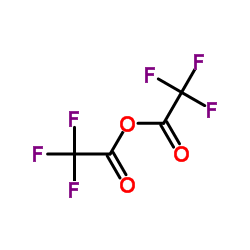
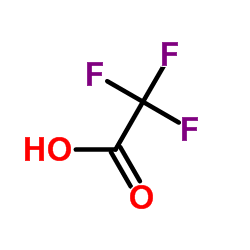
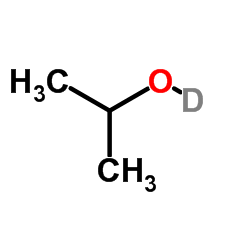 CAS#:3979-51-9
CAS#:3979-51-9 CAS#:14848-63-6
CAS#:14848-63-6 CAS#:925-94-0
CAS#:925-94-0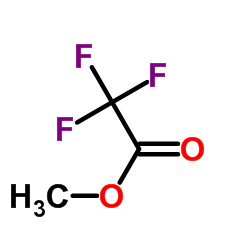 CAS#:431-47-0
CAS#:431-47-0 CAS#:400-38-4
CAS#:400-38-4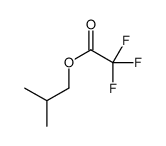 CAS#:17355-83-8
CAS#:17355-83-8![2'-(4-nitro-phenyl)-[2,6']biquinolyl structure](https://www.chemsrc.com/caspic/031/65937-96-4.png) CAS#:65937-96-4
CAS#:65937-96-4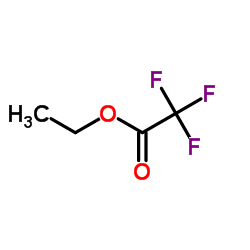 CAS#:383-63-1
CAS#:383-63-1 CAS#:21907-47-1
CAS#:21907-47-1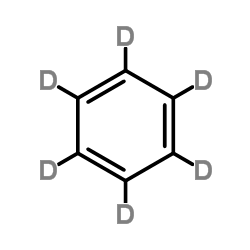 CAS#:1076-43-3
CAS#:1076-43-3
